Average Birding

Birds with Friends #2: Ashdown Forest
May rolls around, bringing tumultuous weather, and the second edition of birds with friends. This time, we're off to Ashdown Forest, in Sussex.
Team average birding (definitely a hashtag in the making there) are in the area for an extended weekend. A pair of friends are going to tag along for a bit of birding on the Friday.
On the day
We've been watching the weather forecast all week with trepidation. Friday rolls around, and it looks like we'll have a grey, blustery morning followed by a wet, grey, even more blustery afternoon. Oh well - we don't have any flexibility on the timings, so we'll just have to go for it.
Old Lodge SWT
We came here with an RSPB trip in the Spring of 2019 and it was superb. We're hoping we'll be able to track down four species we had good views of on that occasion: Common Redstart, Cuckoo, Tree Pipit and Dartford Warbler. The weather might have something to say about that, though.
Everyone ends up being rather later than we'd planned, either via faffing or traffic. The situation is worsened mildly by our having recommended totally the wrong parking place, and then having to mildly improvise our way into the reserve proper. Thankfully we brought an Australian.
We make our way to the North-western extreme of the reserve where the path gently descends through woodland. We point out some features of the area that make it a possible Redstart haunt - lots of low down horizontal branches for perching. In here the sound of the wind is dampened somewhat , and we can pick out a bit of bird song; the gardens outside the reserve have Chaffinch, Blackbird, Wren and Robin all belting it out; the wood itself seems to be full of Chiffchaffs.
The woodland has a little gap as a power line and a pond or two interrupts its path perhaps half way down the hill, but before we get there, I catch a pair of interesting shapes flitting about on the edge; was that a flash of red in the tail I saw there? Indeed! Both birds take up reasonably visible perches and we manage to get everyone a view of them before they take off into the slightly denser coniferous bit of woodland off to our right. Not a bad start, and, double smug, we even predicted that a bit.
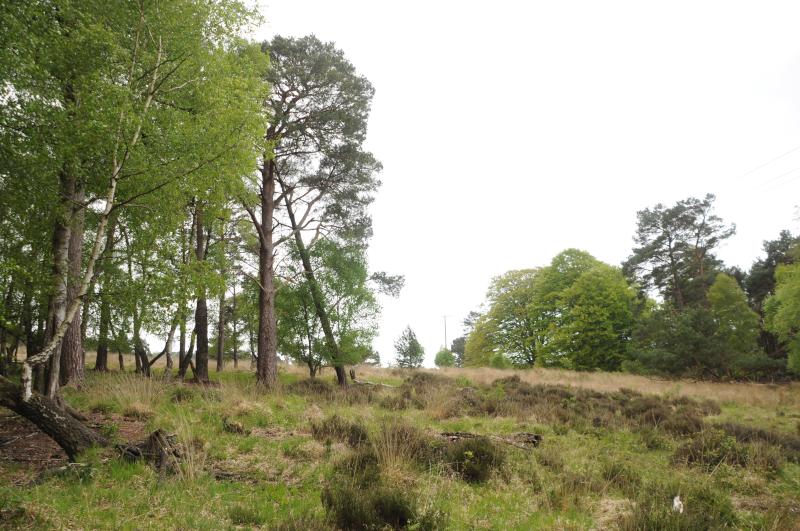
Further on, the path descends rather more sharply down to a tiny stream before climbing just as sharply back up to a gate. The shape of the land here gives us a brief bit of much-needed respite from the wind, and we slow down to take stock of what's here.
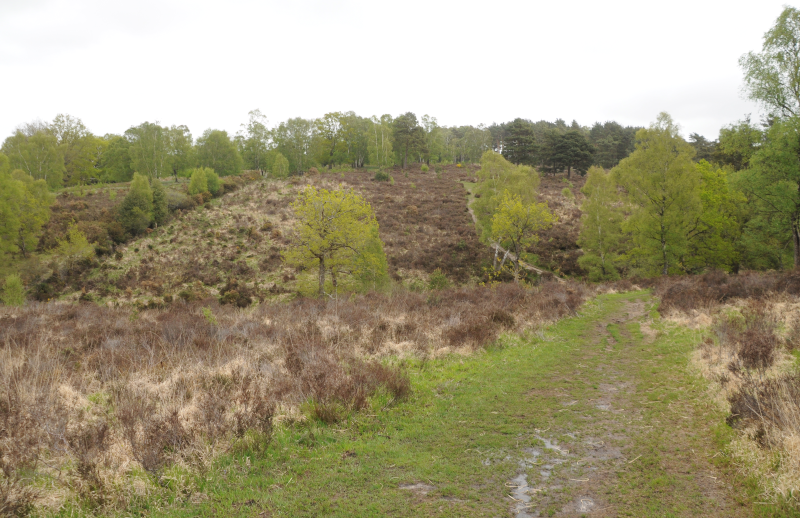
We can hear a Willow Warbler somewhere nearby, but getting eyes on it proves to be beyond us. We do manage to find a Tree Pipit singing from a Silver Birch just below us. Getting our companions onto it is somewhat of a challenge, but we get there in the end - just in time for it to flit off elsewhere, singing as it goes. Not the best view, but we'll take it.
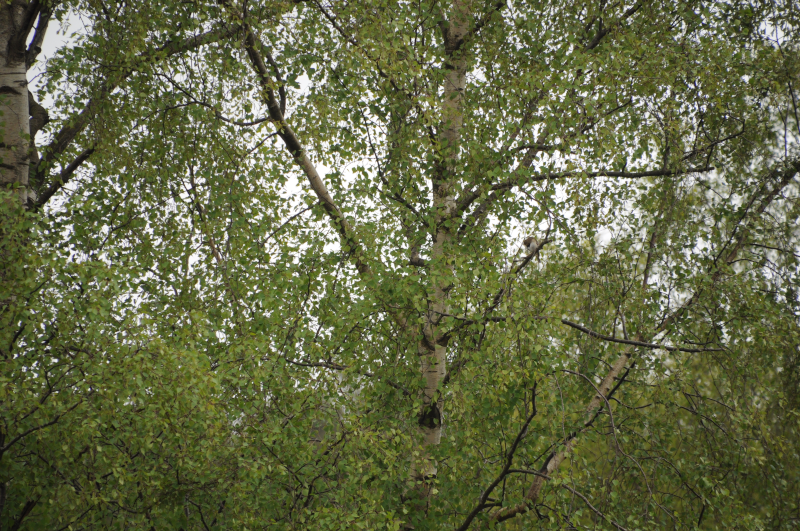
After heading through the gate, we head straight on until we reach what we'd call the back of the reserve. Here we turn left to follow the path alongside another power line, and find our first Stonechat of the day. This is a new bird for our guests, so this stops us for a bit as we follow it along the gorse, and are introduced to what we guess it its other half. We talk about the possibility of nearby escorted Dartford Warbler, but of it there is no sign.
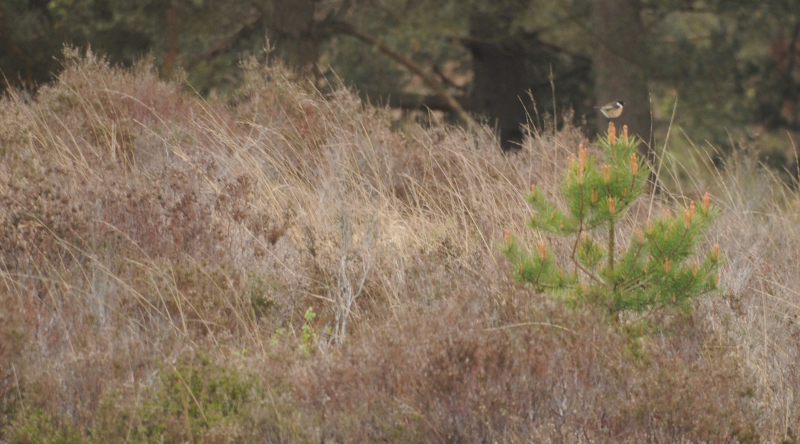
The protection from the wind at this particular corner of the reserve is much reduced, and we make quick progress through areas that, on other days, we suspect would yield more interest. We do find one or two more Stonechat and a Goldfinch or two, but of our other quarries there is no sign. We make our way back to our cars - we did at least time this well, rain is just starting to decorate our windscreens.
Birding abandoned due to rain
We seek shelter at the nearby Hatch Inn which turns out to be an even better choice we'd imagined; AB1 nearly has to order a second portion of the raspberry and almond sponge pudding, it's so good. What is less good is the weather - we'd rather hoped that the rain might have been brief and light, but the longer we have tarried, the heavier it has become.
We abandon our hopes of further birding and retreat to The Dorset Arms where team average birding (#teamAverageBirding) are staying instead. While our guests seem satisfied to have seen three new species, we're a bit frustrated at how much more they would have seen on a better day.
A last minute dash
Our friends disappear off on their next adventure just before dinner. #teamAverageBirding have a late second trip out to Old Lodge in search of Nightjar. We do come across a very distant Cuckoo, but of Nightjar there is not even the faintest chur.
Saturday - Improved Conditions
Saturday's forecast looks better - still patchy rain, but the wind is much calmer, and we'd guess that will bring much better birding.
Old Lodge again
We choose the correct car park this time, although it does contain an enormous bump. We'll try roughly the same route as yesterday - let's see if those Redstarts are in the same place.
Today it takes us considerably longer to get there. Despite improved parking choices. Distractions are aplenty. A Jay picks a fight with a crow in one of the stands of pine on the way there. Two Great-spotted Woodpeckers are very active between the various isolated trees outside that stand, too. In the next bunch of pines, we can see a Tree Pipit performing its parachute like display flight. This is more like it, already.
We exit this little clump of trees just as a noisy group of big looking finches flies over. They're not making a sound we recognise, but by the time we get the binoculars on them they are indistinct blobs. What could they have been?
Yesterday's Redstarts are not present, but in the steep sided valley, we do find some very showy Stonechats, and whilst we're admiring them, we start to hear the determined song of a Cuckoo. Where is it? Opposite side of the valley, we think. We stare at the opposite side for a bit, and the Cuckoo yells at us a bit more - and we see it circling off to our right. It carries on in this vein at some length, while we continue to dote on the nearby Stonechats.
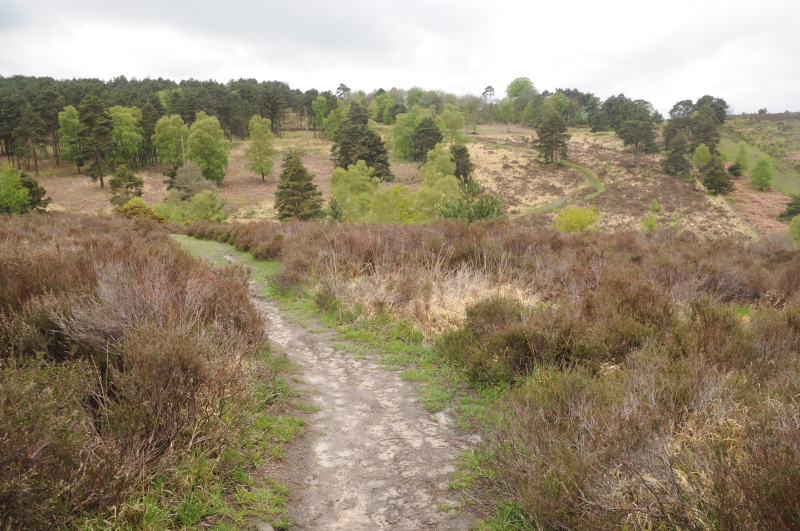

After a few minutes of this, we hear a much nearer, louder noise, that we initially think "angry blackbird?" but then quickly correct to "female Cuckoo". She has another loud bubble from somewhere downstream and then stops. A few seconds later, we see what we assume is a pair of Cuckoos swerving off Northwards. Cool.
Climbing up the steep sided valley returns us to the crossroads by the big gate. Another pair of birders are approaching in the opposite direction - they look well equipped. We loaf about to see which way they go - to our right, it turns out. And it looks like they flushed something interesting as they did. Well, there goes my plan to ignore them.
We saunter in their general direction, and we're in luck - they're friendly birders, and they quickly get us onto the Woodlark they just disturbed. Our views are a bit pants, but we'll take it. After a brief share of what we've seen, they're off on their way (back down the valley) and we on ours (along the edge of the reserve).
A bit of rain attempts to intervene here. This makes visibility poor enough that we almost walk over what we assume are a pair of Woodlarks hiding next to the path. They flop into a rough bit of MOD land adjacent to the reserve, and don their invisibility cloaks. Curses.
This path (unexplored yesterday) yields further fruit as it curves left around a clearing. There's some tremendous piles of dead wood in the clearing, we assume deliberately, because sitting atop it is a beautiful male Redstart. He flops between a few perch points in the woodpile and the trees behind it and generally looks terrific.
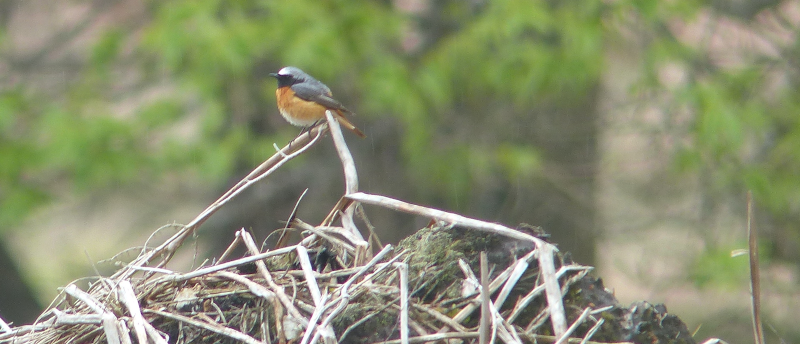
This path eventually meets up with where we found our first Stonechats yesterday. They're still around - there's also a hullaballoo in the woods off to the right; the presence of a pair of Raven are making a family of Crows deeply unhappy - there's a symphony of energetic gronks and caws, and an occasionally harried flight whenever one of the Ravens decides to move. Entertaining.
Instead of following the Stonechat path, we turn back towards the crossroads at the gate - back through a solid bit of pine forest, rather than the more open woodland of the last few minutes. Suddenly, the noise of earlier's chunky finches is everywhere. We spin on the spot to try to get eyes on them, and just about pick out a flock of maybe twenty birds as they come to rest in the pines in front of us, maybe three or four trees back.
In my head, a checklist is being assembled:
- A call we don't immediately recognise
- Chunky finch, and a flock of them, too
- Pine trees
and it's suddenly very difficult to think these birds are anything but Crossbills. Serious efforts begin to reduce the amount of branches between us and the flock, but we needn't have bothered - they slowly migrate back towards the path, settling in the trees either side. All while unmistakably being Crossbills. What a treat; might even be a life tick - definitely a living-memory tick!
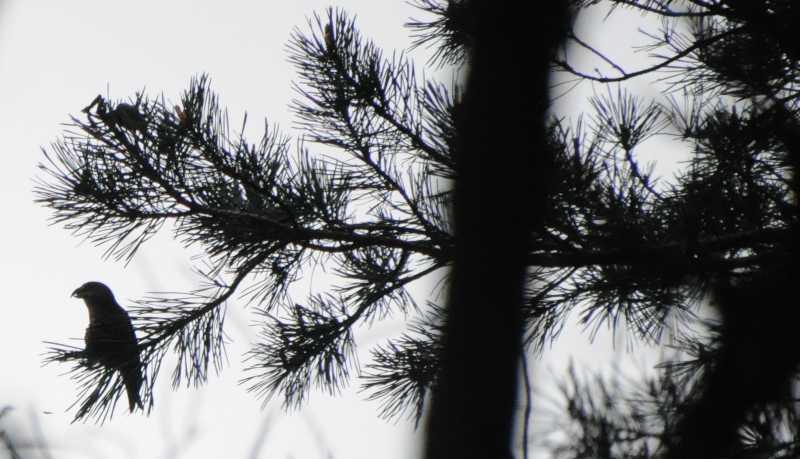
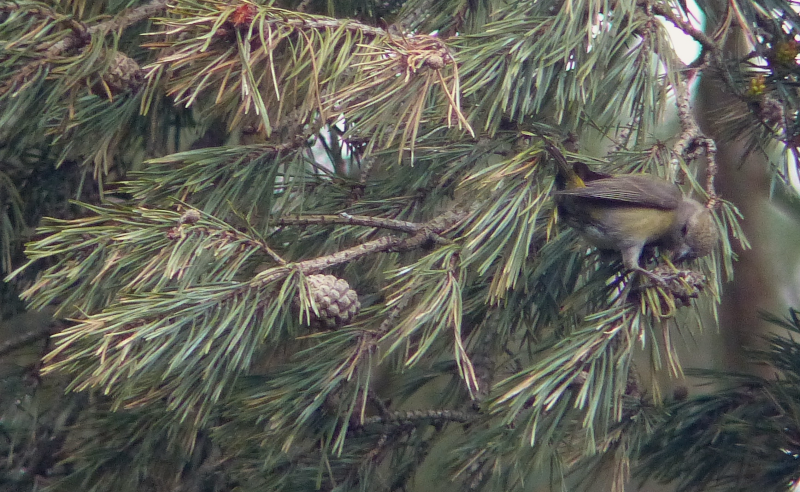

A brief and unsuccessful trip back to Woodlark land is made. We retreat back to the car from there - suddenly everything goes a bit quiet.
Airstrip
A quick stop for cake and cream tea gives us enough energy to try another place. We opt to try the walk we were planning to do yesterday, a wander in the Wych Cross area.
This starts off rather muddier than we'd like, but we squelch on regardless . The constant chorus of Chiffchaff and Willow Warbler definitely helps. As we climb up out of the rather wet woodland into a drier, heathier bit, we're again greeted by displaying Tree Pipit and a Stonechat or two.
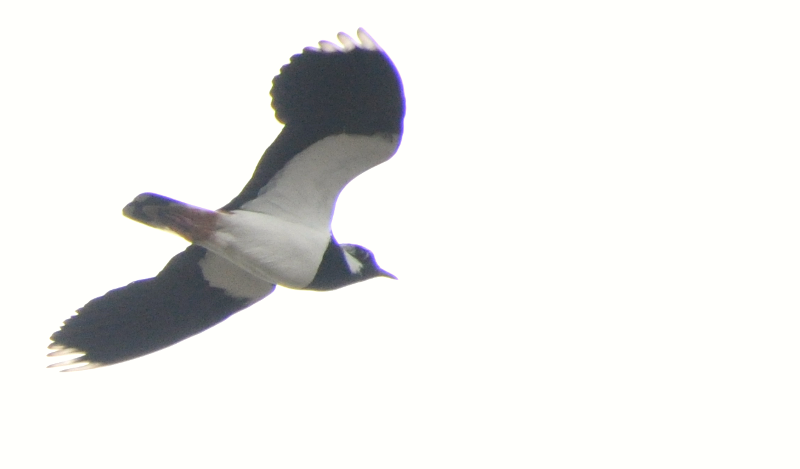
Further up, crazy Lapwings squeak at nothing. Or perhaps each other. Who knows what goes on in the mind of Lapwings? Certainly not us. Yet more Stonechats, and these ones have obvious youngsters tagging along with them. Lovely. This little Stonechat family travel with us along the path until the gorse/heather mix starts to get thick, and a few spindly trees start to grow from it.

AB2's in the middle of saying "This looks good for Dartford" when one hops up into one of the tiny trees behind where the male Stonechat is perched. It stays visible for long enough for us both to get a good look at it, and then it disappears. Just as we give up looking for it and move off, it flies across the path in front of us, to disappear rather more conclusively in some denser gorse to our right.
We work our way round a bunch of trees and round on to what we assume all of the local birding literature describes as the airstrip. We hope it was flatter if that was ever used that way in the past - it's a wide path, but at four or five different elevations depending on which bit you're walking.
We get perhaps fifty metres down the strip before serious rain arrives, and we're forced to quickly bail over into the trees to our right for cover. An argument ensues over whether we'll get more wet waiting in the tree drip zone or by a run back to the car. This thankfully takes long enough that when it resolves to the run, the rain stops shortly afterwards, and we even get a brief bit of sun to accompany the rather soggy traipse back to the car park.
Hindleap reconnaissance
A bit of intrepid Googling reckons that Hindleap might not be a bad place for Nightjar. There's a bit of time before dinner to explore the area before it gets dark. We take the Nightjar likelihood meter for a walk, but its readings are unconvincing, particularly in comparison to where we just came from! We'll perhaps try out Airstrip instead then, from a slightly less puddled car park.
Nightjar attempt #2
After some delicious nachos and a Burrito each in Forest Row, we roll into the Long Car Park next to Airstrip, and head out in hope of Nightjar.
We walk out as far the Dartford-adjacent tiny woodland, glowering at all the isolated trees with perfectly angled branches that are utterly devoid of the Nightjars that should be perching on them.
Slowly the light leaks out of the day, and our ears start to sharpen up. The first thing we hear is...a steam train? Are we going mad? No, apparently there is a heritage steam thing that runs nearby. Once we've worked that out, our next struggle is with the road noise, which has enough vibration in it to occasionally sound like a bit of churring.
Once or twice we pick up a more distinct hint of a churr, and we just about agree that it's in the direction of the car park. We're maybe a couple of hundred metres away from it when a much more obvious bit of Nightjar song stops us in our tracks. We don't get much of a performance though - almost as soon as we stop, the song ends, and with a brief flight call, that's it - the show's over.
What a difference a day (and the weather!) makes - all four target birds today, plus two terrific bonuses in the Crossbills and the Woodlark. Fab.
Sunday: borderline pleasant
Sunday's weather looks borderline balmy - only occasional light showers, although that wind is starting to kick up again, and that looks like it might wash out the evening.
We decide to visit the Ashdown Forest Centre to start with. We previously came here in the afternoon of a trip with the RSPB Central London group, and it was a nice walk, but a bit of a damp squib, bird wise.
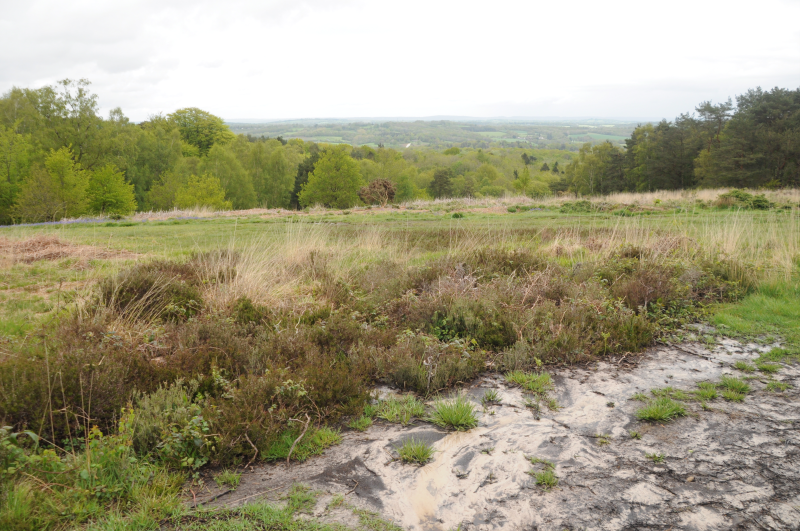
We find the same again - a good walk, with great views to the North, but birds somewhat limited; a lone displaying Tree Pipit, Stonechat (again with juveniles), Linnets and a flyover Woodpecker or two.
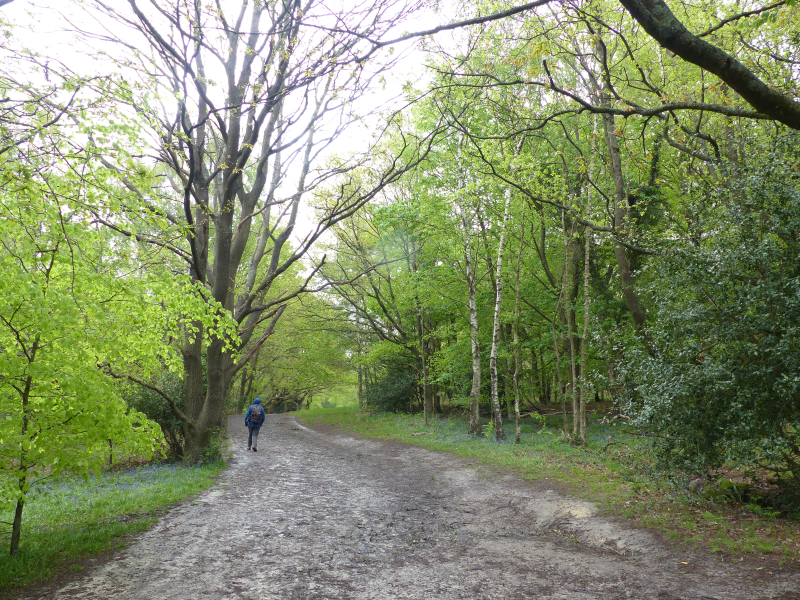
Well, fine then, we'll go back to Old Lodge to see if we can find that Woodlark again - we only got a fleeting view yesterday, and a photo would be welcome as well.
Old Lodge again (again)
We return to Old Lodge, and our progress is blocked by a veteran Kentish birder who really wants to talk to us. We get a good summary of his visit to the reserve, as well as a short guide to where he birds now, his minor disagreements with the bird recorders where he lives, and, eventually, some birding memories from the deep past, from when he started birding 50+ years ago near Cliffe, with some seriously big name birders. It's only the presence of a long-suffering acquaintance nearby, looking keen to move on that stops us talking to him for longer. We should have poked him for contact details; I bet there's plenty of gold lurking in those memory banks.
We tread roughly the same route as yesterday. The changes in sightings are as follows. We hear but don't see the Cuckoo this time. An unbelievable confiding Tree Pipit poses for us near crossroads gate, while a pair of Willow Warblers provide the soundtrack.

An extra pair of Redstart appear where yesterday's Woodlark was, accompanied by further Tree Pipit, Whitethroat and Stonechat. Of the Woodlark there is no sign.
Yesterday's woodpile perching Redstart is still there, but this time we spy him flitting to the edge of the clearing to visit his Mrs. Cute. We find a family of Coal Tits nesting in a hole in a tree in the centre of the same clearing.

The Ravens are still present at the reserve boundary, but this time they are unworried by Crows, and are busy tearing apart the remains of what we guess was a rabbit. The Crossbills alight in exactly the same area as they did yesterday, and our photos of them remain seriously sketchy.
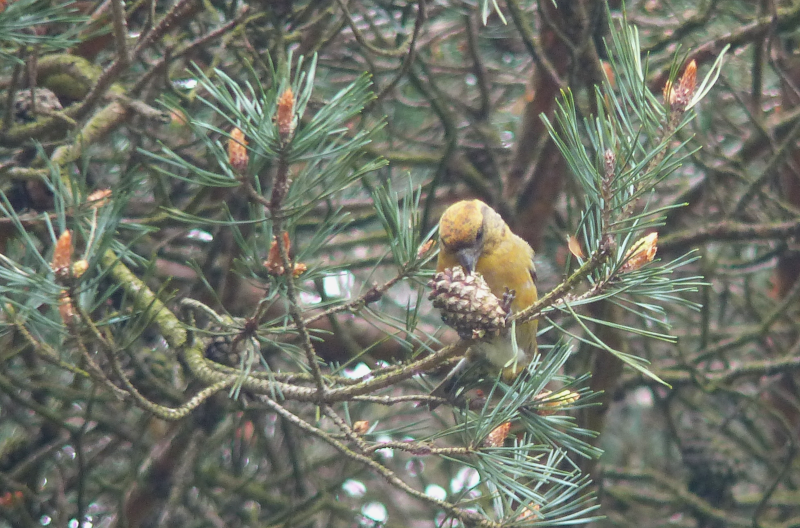
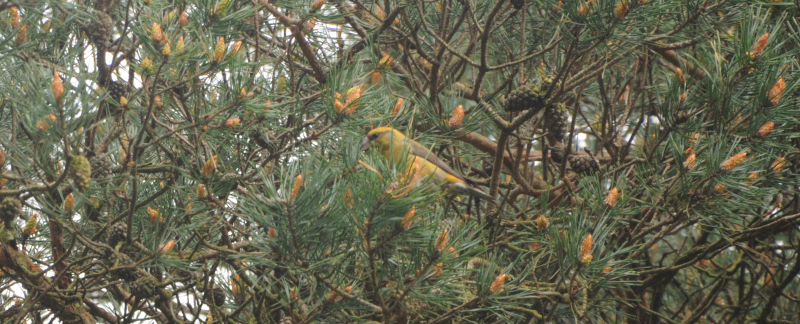
The return trip to the car is again uneventful.
Airstrip again
Having discovered the considerably more convenient Long Car Park yesterday evening, we start from there today, with the intention of exploring Chelwood Vachery.
This plan lasts about ten minutes, but we do pick up a Woodlark in that time - sailing down from treetop to a disturbed bit of ground, and then utterly disappearing in the gap between us switching from binoculars to cameras. As we reach the first turning where we'd need to commit to the longer walk, a look at the sky tells us that might not be a great idea - ominous clouds are approaching at speed. Instead we'll walk a shorter loop, visiting some of the places we looked for Nightjar last night, and the place we found Dartford Warbler yesterday.
This obviously doesn't find us a Nightjar, but we do get treated to a flypast by a pair of Dartford Warblers just as we get to that spot. That is, of course, the last we see of them, despite patiently hanging about for a good fifteen minutes.
We make a break back to the car, have a quick chat with an impressively lens -endowed dog walker, take a few photos of a Kestrel sheltering from the wind in a dead tree, then head off for dinner before the rain really kicks in.
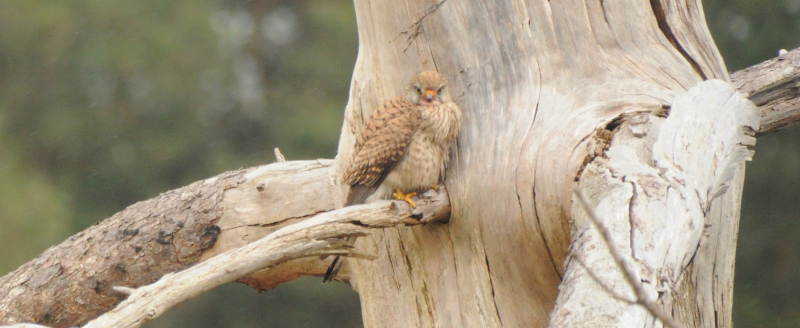
Monday
We decide we can cram in a bit of birding before breakfast on Monday morning - a read of the forecast last night suggests we've got until 9 or so. This turns out to be optimistic, but we don't mind - picking up a traditional Goldcrest and Nuthatch in the nearby churchyard, and, rather more excitingly, a family of Kingfishers and a Yellowhammer in the nearby stream.
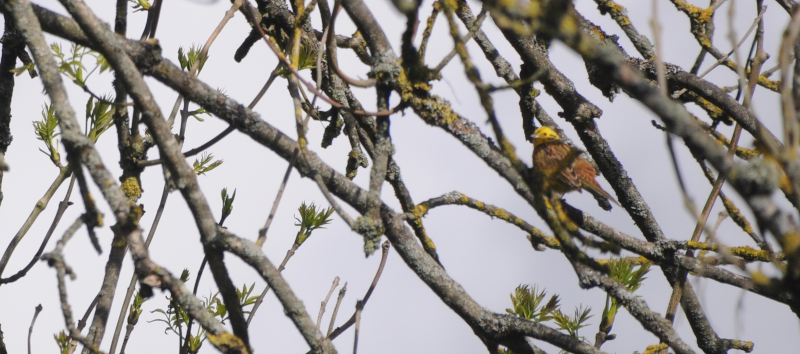
Post-breakfast we decide we've really only one mission left: to get a photo of Woodlark. And for that, to Long Car Park we shall return.
Chelwood Vachery
Same deal as yesterday, but this time the weather looks like it might look more kindly on our plans for a longer walk. First though: is that Woodlark visible?
Remarkably, yes! This time it even sings for us on the way out of the tree and on to the ground, and it doesn't totally disappear. A good start!
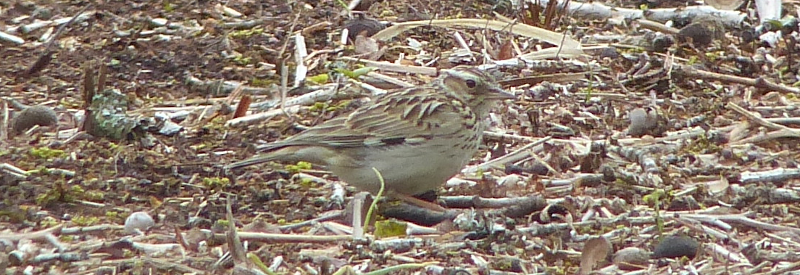
The diagnostics for Woodlark are quite neatly captured in that image - note the clear eye stripe, and the white-black-white pattern on the wing. A good chunk of a bird it is too.
Things improve further from there - we find a Cuckoo in some distant trees off to the right of the path. A flock of noisy, chunky finches that we now know are Crossbills give us a flyover too.
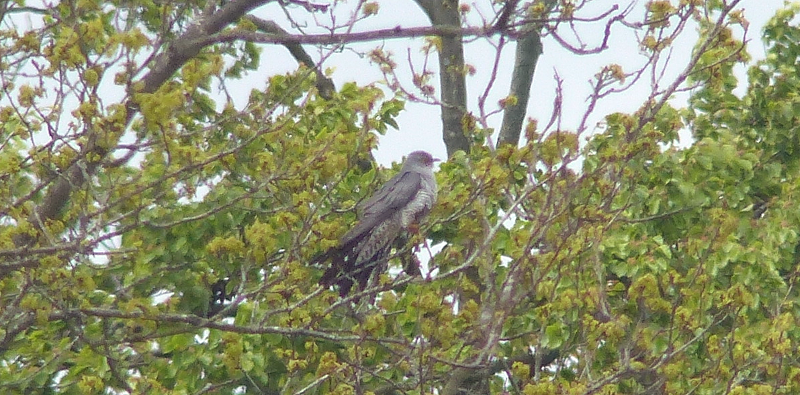
The path eventually heads into some lovely bluebell woods and, after a bit more walking, descends into an ornamental garden with a flowing stream.
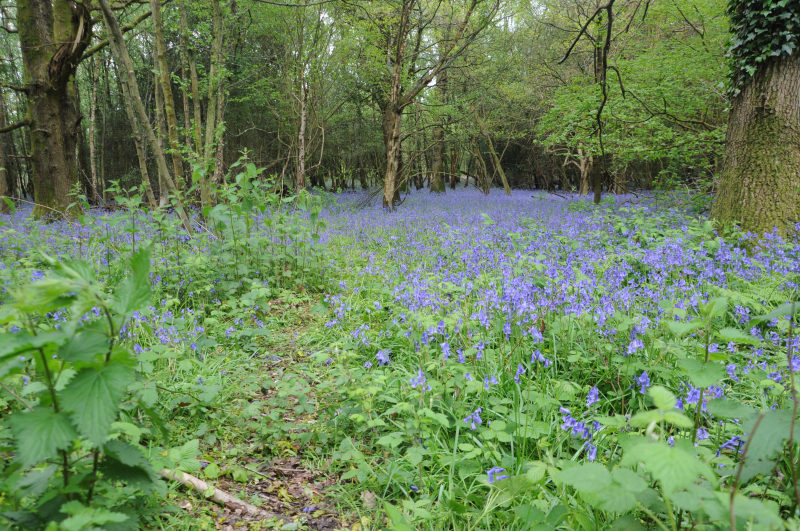
A pair of Grey Wagtail are noisily feeding near it. AB2's ears pick up the sound of juvenile Great-spotted Woodpeckers. We think we've found them when we see a bird dart on to a tree, hop in, then hop out again, but it turns out to be a Nuthatch. Handily though, the woodpecker turns up a few seconds later on a hole no more than a metre away on the same tree, Wow!
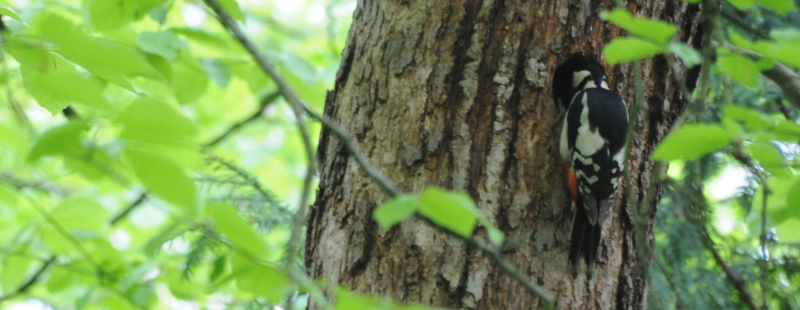

We pick our way around the back of the Vachery until the path leaves the woods. Here we cross back over the artificial stream, and heads back towards the Airstrip. The landscape opens back up into heathland, and the trees are reduced to an isolated stand or two. We take a break for a snack in one that features a bench.
This turns out to be an auspicious snack - a very noisy Blackcap (or maybe Garden Warbler?) delays our exit for long enough for an even more talkative Cuckoo to arrive, perching atop the same tree our Sylvia was in. It then flops off in the direction of some other, more isolated trees, and we can see it making the occasional trip to the ground to feed. The views are, for Cuckoo, borderline spectacular - helped no small amount by the sun finally starting to come out.
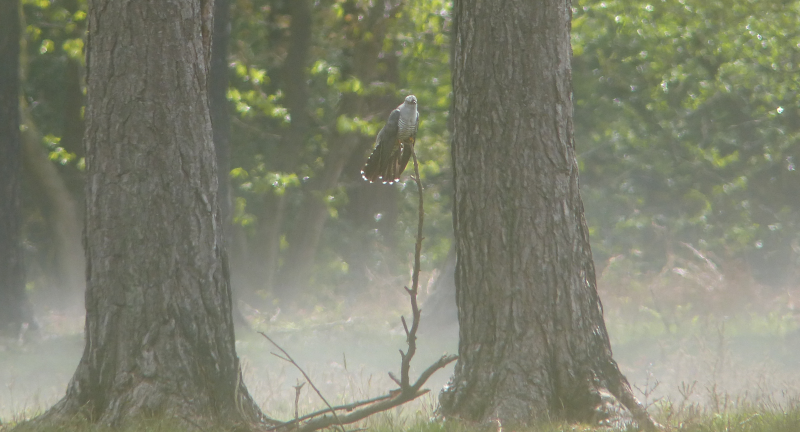

We eventually tear ourselves away from the Cuckoo for one further missed appointment with the Dartford Warblers, and after that, it's time we were on our way home...